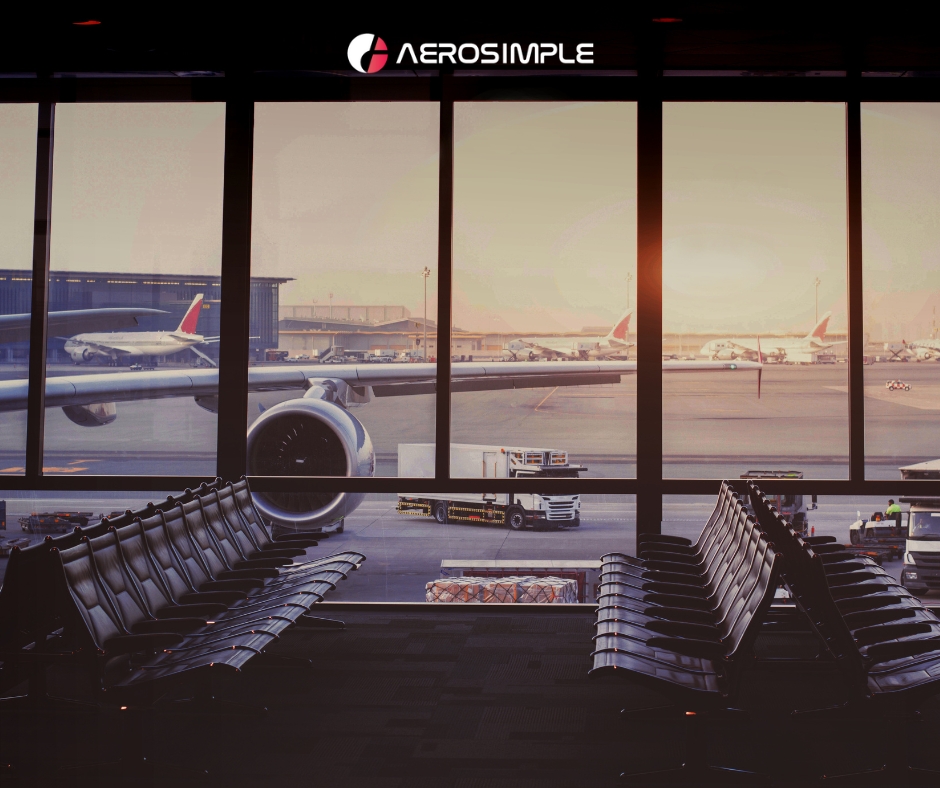Inspecting Excellence: Safeguarding the Future of Air Travel
.jpg)
Imagine navigating through our current era without airplanes – a challenging proposition, isn't it? The innovation of airplanes has proven to be a boon in numerous aspects, whether it's enhancing time efficiency, boosting economies, expanding aviation capabilities, or facilitating global communication. Aviation holds a pivotal role in the development of any nation, and air travel stands out as the safest mode of transportation compared to other alternatives.
To ensure the reliability of this secure travel process, aviation undergoes rigorous safety checks in which inspections play a crucial role in upholding the trust and safety of passengers worldwide. Additionally, if you'd like to gain a deeper understanding of the various types and components of self-inspections, our earlier blog: The Ultimate Guide to Airport Safety Self-Inspection provides comprehensive coverage. In this blog, we will analyze the significance of these inspections and their critical role in preserving the safety standards within aviation.
Safety Compliance:
Inspections are conducted to ensure that aircraft comply with safety regulations and standards set by aviation authorities such as the FAA in the United States, EASA in Europe, and equivalent organizations worldwide. Adherence to these regulations is crucial for maintaining high safety standards in aviation operations. By carefully scrutinizing aircraft components, systems, and structures, inspectors detect and address potential issues before they pose any safety risks. This proactive approach greatly minimizes the chances of in-flight incidents, thereby ensuring that air travel remains one of the safest modes of transportation.
Preventive Maintenance:
Incorporating scheduled inspections, such as the 100-hour inspection, annual inspection, and progressive inspections, is essential for effective airfield management. Utilizing Airfield Inspection Management Software ensures the seamless execution of these routine checks, providing a centralized platform for tracking and scheduling inspections. These routine checks are vital for detecting potential issues and signs of wear before they develop into major problems. Furthermore, employing advanced techniques like boroscopic inspection enhances the accuracy of the examination process. By addressing discovered issues proactively during these inspections, the risk of in-flight failures or malfunctions is greatly minimized, thus bolstering the overall aviation safety framework.
Data Gathering:
Inspections provide essential data on aircraft component performance and condition, often employed for trend analysis, predictive maintenance, and continuous improvement of aircraft design and maintenance protocols. By inspecting airfield equipment, airports gather information on diverse assets like devices, vehicles, and inventory. This data aids in predictive maintenance, enabling proactive measures during inspections.
Extended Aircraft Lifespan:
Regular inspections and timely maintenance contribute to the longevity of aircraft. By identifying and addressing wear and tear, corrosion, or other issues promptly, inspections prevent the accumulation of damage that could lead to premature retirement of the aircraft. This, in turn, optimizes the return on investment for both airlines and aircraft operators.
Compliance with Regulations:
The aviation industry operates under strict regulations to guarantee the highest standards of safety. Regular inspections ensure that aircraft comply with airworthiness directives, manufacturer recommendations, and other regulatory requirements. This ensures the safety of individual flights and upholds the integrity and reputation of the entire aviation industry.
Cost-Efficiency:
While some may view inspections as an operational cost, they are, in fact, a wise investment in cost efficiency. Timely identification and resolution of issues during inspections prevent the escalation of problems, reducing the overall maintenance costs in the long run. Furthermore, proactive maintenance contributes to fuel efficiency, saving costs on operational expenses. Leveraging Airfield inspections software can streamline these inspection processes, maximizing their effectiveness and further enhancing cost efficiency.
Environmental Impact:
Efficiently maintained aircraft are not only cost-effective but also environmentally friendly. Regular inspections help optimize engine performance, reduce emissions, and contribute to the overall sustainability of air travel. This aligns with the global efforts to create a greener and more eco-friendly aviation industry.
Public Confidence:
Aviation inspections contribute to building and maintaining public confidence in air travel. Passengers trust that their safety is a top priority, and the visible commitment to rigorous inspections reassures them that every measure is taken to ensure a secure and reliable journey.
Conclusion:
Our Aerosimple team has developed a cutting-edge Airport inspections software, constantly evolving to meet the exacting demands of the aviation industry. Boasting an array of comprehensive features, including customizable checklists, the ability to create inspection forms, and effortlessly schedule inspections, we serve as the quintessential solution for aviation's needs. Moreover, this module seamlessly integrates inspections with corresponding work orders, facilitating streamlined operations. Additionally, users can easily add remarks and annotations, enhancing the efficiency and thoroughness of the inspection process, all conveniently housed within our intuitive Inspection module.
Uncover the transformative power of our solutions in revolutionizing airport inspections, making them effortlessly efficient and highly effective. Experience firsthand the immense potential of Aerosimple's features to streamline airport management processes. Schedule a personalized demo with us today and witness how our digital innovations can elevate your airport operations to new heights.






















.jpg)









